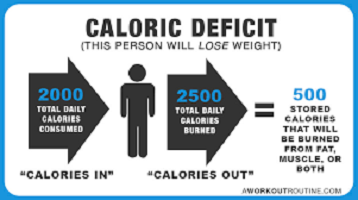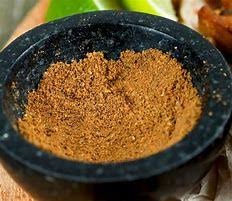Caloric Deficit: How to Burn More Calories Than You’re Eating
Table of Contents
Caloric Deficit: How to Burn More Calories Than You’re Eating

- Weight Gain Breakfast: Healthy Smoothie Recipes
- Watermelon Smoothie | Weight Loss | Hot Weather Special
- Detox Water for Weight Loss & Flat Belly
- Lemon Cucumber Water for Weight Loss and Detox
- Nigerian Food Table for Weight Loss Meal Plan
The basic concept is that daily calorie in minus daily calories out equals a caloric deficit.
The first thing you should know is that one pound of fat contains around 3,500 more calories.
Caloric Deficit |There are only 3 ways you can create a deficit of calories each day:
- Each day, consume fewer calories than you expend. Keep in mind that your body burns calories throughout the day as part of your basal metabolic rate (BMR), because your body requires energy (calories) to accomplish basic activities. Breathing, digesting, circulating, thinking, and other bodily functions are all vital for survival.
It’s critical to understand your BMR so you can estimate how many calories you burn daily. In addition, you burn calories by doing things like showering, cleaning, walking, typing, and exercising regularly (which uses even more calories each day).
So, by just consuming fewer calories each day, you will have fewer surplus calories to burn off. Eating less fast food or junk food, eating more fresh vegetables and fruits, eating lean protein, reducing the number of bad fats, and drinking more water are all simple ways to do this.
- Increase your physical activity to burn more calories than you ingest. You may establish a caloric deficit simply by burning more calories if you eat enough calories to support your BMR and exercise more.
This only works if you’re not already overeating. For example, if you exercise harder each day to burn an extra 500 calories, you’ll lose around one pound in a week (500 calories x 7 days = 3,500 calories).
You can increase your workouts or simply include more movement into your routine. Some suggestions: walk instead of driving, always take the stairs, move around at work instead of sitting at a desk, play with your kids or dog, perform squats while watching television.
Make the most of your day; the options are unlimited!
- A combination of calorie restriction and exercise increases calorie expenditure. This is the most efficient method for losing weight and maintaining it.
When you combine eating less with exercise, it’s much easier to establish a significant calorie deficit because you don’t have to starve yourself or exercise excessively.
Studies demonstrate that combining food and exercise results in greater weight loss than either technique alone. One theory is that exercise boosts metabolism, which in turn boosts fat burning.
For example, if you ate 200 calories less per day and exercised 300 calories more per day, you’d lose one pound every week.
Compare that to the other instances above, and you’re losing weight at a similar rate without making drastic dietary or exercise modifications.
Calorie Deficit | Bottom line
Consistency is the cornerstone of every successful weight loss program. Your calorie shortfall will “add up” over time, and you will lose weight.
But, because it’s a math problem, remember to be extremely precise with your caloric intake and exercise. It’s also worth noting that, while this may appear to be easy math, our bodies are actually quite complex.


